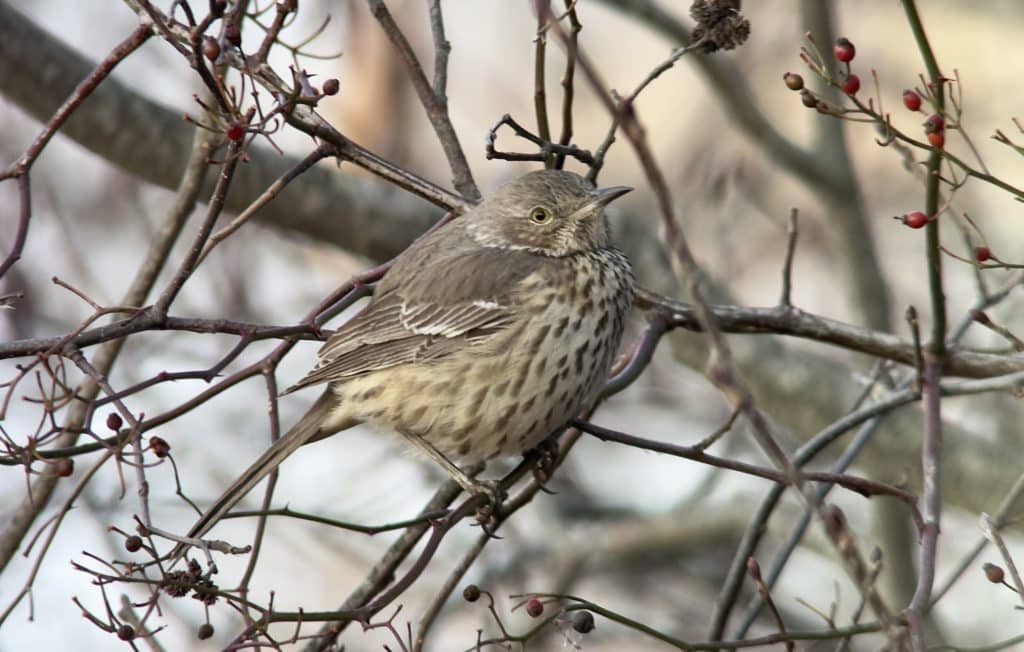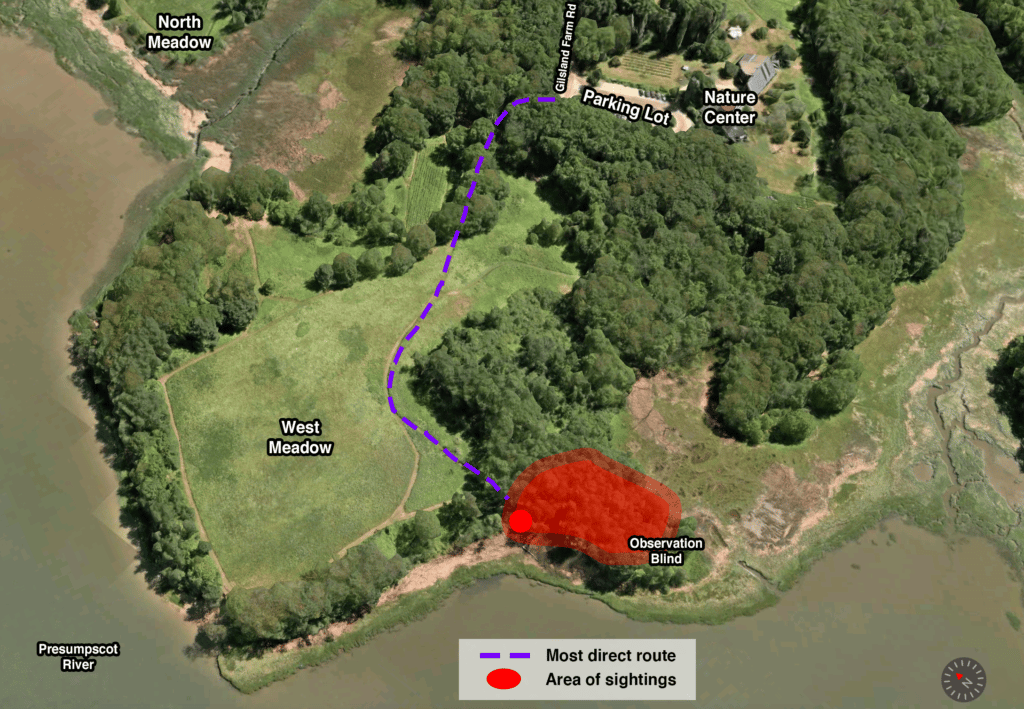
We tend to save most ‘rare bird alerts’ on this blog to national rarities like the Redwing in Portland or the famous Steller’s Sea-Eagle, but last week a bird considered rare anywhere along the east coast was found at Gilsland Farm, a Sage Thrasher!
This Sage Thrasher was found during our weekly bird walk (held every Thursday at 8 am). While we were scanning distant ducks and gulls from the edge of the West Meadow, a bird-walk-regular, Sue Malcolm, pointed out this odd bird sitting at the base of an apple tree only 20ft in front of us. As soon as it turned to face us, there was no question it was a Sage Thrasher!
A What? As their name implies, Sage Thrasher is a species you would expect to find among the sagebrush of the western US. As Cornell’s All About Birds reads, “Almost all Sage Thrashers leave breeding grounds in the Great Basin for wintering grounds in the Desert Southwest and Mexico”, you can see their range map here. They are the smallest member of the Mimidae family, closely related to more common birds (in Maine) like the Northern Mockingbird or Brown Thrasher.
Why is it here? This species has only been seen in Maine one other time, when one was found at Cape Neddick (York County) from 17 Nov – 6 Dec 2001 (NAB 56[1]: 29). Across the northeast, Sage Thrashers have established a pattern of vagrancy in winter, with New Hampshire picking up its first record two winters ago (19 Dec 2020 – 5 Feb 2021), when there were also two others in the northeast (New York’s seventh record in East Chatham, and Massachusetts’ fifth record in Hatfield). The outlier in the eastern records, is the northeaster-most, from Kent Island, New Brunswick on 20 Jul 1999 — a bird found and banded by Maine Audubon trustee, Nat Wheelwright!
Where can I see it? Fortunately, the Sage Thrasher has been staying in a very limited area at Gilsland Farm. Unfortunately, it is acting like a thrasher and doing a good job hiding in dense thickets. In the map below you can see the area it is frequenting, highlighted in red. There is a solid red circle pointing out an apple tree on the edge of the marsh, where it is often best seen. At the base of that apple tree, and throughout the thickets, there are lots of [invasive] multiflora rose where the thrasher spends most of its time feeding on the fruit. For most visitors, patience has been rewarded.

Updated sightings are best found on eBird or GroupMe. Using eBird’s ‘Rare Bird Alert’ for Cumberland County, you can see recent sightings with notes and photos. However, the most timely reports are likely to be posted on the Maine Rare Bird Alert GroupMe (don’t worry, we’ve ironed out many of the kinks since starting it during the sea-eagle’s time here), which you can sign up for here: tinyurl.com/MaineRBAGroupMeRules
Good luck if you go looking for this bird. It’ll definitely be a target of our bird walk this Thursday, so join us (meet in the parking lot at 8 am) if you’d like some help tracking it down!
